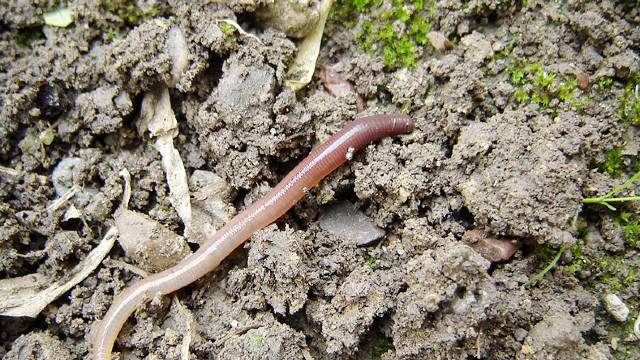By Bill Cook
As a kid walking to school on rainy days, I would routinely pick-up nightcrawlers stranded on the pavement, and toss them back into a yard or roadside. Now, I stomp on them. While I don’t think that my heart has hardened against innocent animals, I’ve come to understand the ecological misfits that nightcrawlers represent. Regardless, my inner child still feels a little guilty.
The glaciated part of North America has no native earthworms. They do not belong here.
Who cares? A good question that deserves an answer.
Earthworms, about 30 invasive species, all imported, mostly from Europe, are voracious feeders of organic matter. In a vegetable garden, this might be a good thing. In a forest, earthworms are rather serious change agents.
Many of our northern forest types have thick layers of organic matter, in various stages of decomposition. The blanket helps keep soil surfaces moist and fosters a massive fungal ecosystem. Trees and other plants have adapted to, and benefit from, these conditions.
Until the earthworms eat it.
Change presents new regeneration challenges, among other things.
Strip away that nurturing blanket, and soils become warmer and drier. Chemical processes change. Nutrient and water composition shifts. Our native seedlings, both trees and herbs, don’t particularly like this. Sugar maple, our most common Michigan tree species, is especially stressed by this new environment.
Not only does regeneration suffer, but the fine roots have trouble without the organic matter blanket. They’re more vulnerable to drying and higher temperatures. Loss of these fine roots is a “predisposing stressor” that reduces their availability to absorb water and nutrients which, in turn, slows growth and increases vulnerability to pests and pathogens.
Earthworm activity has been linked to current regional declines in sugar maple vitality. Tara Bal, at Michigan Tech, has studied maple decline for years.
Often, earthworms don’t work by themselves. They are cogs in a synergy of both native and exotic species. Matt Dornbush, at the UW-Green Bay, has studied one of these synergies. Brand new tiny seedlings are eaten by slugs (another exotic species). For those that survive the slug attacks, and grow a bit larger, provide a picnic for mice and voles. For the remainder, if there are any, they may grow large enough to be eaten by overabundant rabbits and deer.
Talk about running the gauntlet of hunger games!
As shrub species, such as exotic honeysuckles, advance, they contribute to the scenario. The animals create habitat better for these exotic shrubs, and not so good for native plants, then the advancing exotic shrubs help maintain habitat for slugs and friends.
This negative feedback loop works against native flora and those habitat components important to many species of wildlife. These new vegetation types are less diverse with fewer natives and more exotics. Ecosystems change. Not for the better.
A changing climate also weighs-in, favoring the exotics and discriminating against many of the natives. As Kermit the Frog would say, “It’s not easy bein’ green!”
The forest floor can be a complex set of ecologies, as humble as it may appear. It’s a critical nursery for plant regeneration, root development, nutrient cycling, and water storage. Earthworms, and their allies, are degrading this nursery.
So, I don’t mind so much when I stomp on those worms.







